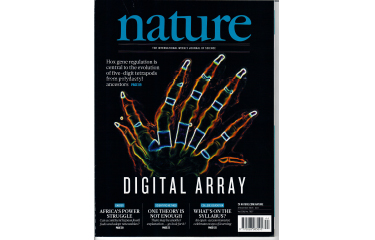
-
Careers • News • Contact us •
- Login
- Français
Creating new
knowledge
Exploring new avenues to develop tomorrow’s medical knowledge through an approach that integrates basic and clinical research
Our research units are led by principal investigators who collaborate in a spirit of collegiality and with the vision of bridging the gap between research and patients. They train the next generation of scientists and are independent and creative minds who work tirelessly to improve health.
Current research
"Our work focuses on identifying genetic mechanisms responsible for the proper development of the foetus, with the aim of better understanding the causes of congenital malformations."
Marie Kmita, research director
Genetics and Development
The Genetics and Development Research Unit’s primary research interest is to understand the genetics underlying patterning events in the developing embryo. Specifically, the research projects developed in the laboratory focus on the function and regulation of the Hox gene family, whose dysfunctions have been associated with congenital diseases in humans.
The research goal is to identify the mechanisms controlling the regulation of Hox genes and their implication in patterning events as well as morphological evolution among vertebrates. Research projects combine genetics and genomics approaches, and primarily take advantage of the mouse as model system.
| Team |
|
| Affiliations |
Other affiliations
|
| Degrees and experience |
|
| Publications |
| Voyez la liste des articles scientifiques de la directrice de l'unité. / See the Research Unit Director's list of scientific articles. |
Our current research program articulates around three main themes aimed at understanding the dynamics of developmental genes’ activity in the course of embryonic development and evolution.
1. Chromatin architecture and Hox regulation.
The 3D organization of the genome is tightly associated with gene regulation. Whether it is a cause or a consequence of enhancers/genes activity remains a matter of debate. Our lab is investigating mechanisms that change the chromatin 3D architecture and their impact on Hox gene regulation. To address this question, we use the developing limb as model system and we primarily focus on the regulation of the HoxA gene cluster. We previously showed that HoxA expression in the presumptive digit domain is associated with tissue-specific enhancer-promoter contacts, some of which being independent of enhancer activity (Berlivet et al., PLoS Genetics 2013). This work was based on Chromosome Conformation Capture-derived assays (notably 5C), in collaboration with Dr. Dostie (McGill University), which measure the frequency of physical contacts between remote genomic loci in vivo (Dostie and Dekker, Nature Protocols 2007). More recent work from our lab provided evidence that the dynamic binding of the Polycomb Repressive Complex 2 in developing limbs both contributes to Hox repression through direct binding at Hox promoters and modulates long-range DNA-DNA contacts in a way that, unexpectedly, favors interactions between permissive HoxA genes and a subset of active enhancers (Gentile et al., Developmental Cell 2019). Ongoing research projects are aimed at understanding how changes in 3D chromatin architecture are implemented in the course of embryonic development.

2. HOX transcription factors and chromatin accessibility.
How cells acquire distinct fate during embryonic development is a central question in developmental biology. Studies aimed at understanding mechanisms underlying the switch from progenitor to differentiated cells uncovered the existence of transcription factors (TFs) able to trigger chromatin accessibility. These particular TFs, referred to as pioneer factors, induce the activity of transcriptional enhancers and genes by making them accessible to other TFs and the transcriptional machinery. Our work on HOXA13 and HOXD13 transcriptional activity in developing limb provided evidence that these two TFs are required for the transition from the early limb developmental program to the late/distal program (Sheth et al., Cell Reports 2016). Our latest data show that chromatin accessibility at a series of enhancers controlling genes associated with digit development/patterning requires HOX13 function, eventually allowing other HOX factors to bind these enhancers (Desanlis et al., Nature Communications 2020). To what extent this ‘pioneering’ activity is shared by other HOX transcription factors and how the HOX13-dependent chromatin accessibility is achieved are questions being currently investigated in the lab.
3. Hox genes and morphological novelties.
Morphological diversity among animals and its adaptive advantage associated to habitats is fascinating. Such diversity is associated with modulations of developmental gene regulation and function. We use the emergence of digits, which characterizes the fin-to-limb transition, as a model system to gain further insights into changes in the regulation and function of Hox genes in the context of the emergence of novel morphological traits during evolution. For instance, our study on Hoxa11 regulation revealed that the change in Hoxa11 regulation that distinguish fish from limbed-vertebrates, is associated with the pentadactyl state (five digits per limb) of most modern limbed-vertebrates and likely underlies the transition from polydactyly (more than five digits per limb) in our ancestors, to pentadactyly (Kherdjemil et al., Nature 2016).
Important Discoveries
Tools
| Press review |
|
| Press review |
| Grants |
|
| Recognitions and honors |
|
Join the
group Research
Available positions
Ongoing clinical studies
Research Partners


Life in the
laboratory

© Montreal Clinical Research Institute, Année.All rights reserves. | Privacy policy | Terms of use | Web site by Agence Riposte


